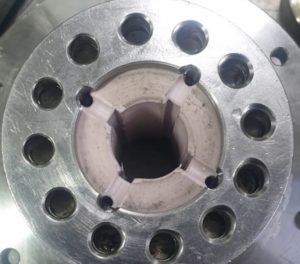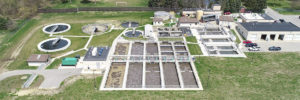Sewage Processing Technology at IFAT ENTSORGA 2010
In Germany there are around 10,000 sewage works run by local authorities. According to the Federal Environment Agency (Umweltbundesamt, Dessau) these works use around 4,400 gigawatt-hours of electricity each year, equivalent to the entire annual output of one modern coal-fired power station.
The agency estimates that around 20 percent of this energy could be saved – through more efficient aeration, improved plant controls and the use of engines and pumps with the highest energy-efficiency rating.
"As regards aeration, savings can be made in all the individual components – from the compressor to distribution and the aeration elements themselves," says Dr Gerhard Seibert-Erling, Branch Manager at John Becker Ingenieure (Kerpen), a consultancy firm specialised in energy optimisation and electrical/machinery/process technology. "At today’s electricity prices, the annual electricity costs for a compressor in permanent operation are often higher than the actual purchasing costs," explains Dr Seibert-Erling. "It is very well worth while, therefore, to make consumption values a key criterion in a decision to purchase."
The atmospheric oxygen produced by the compressors is blown into the biological cleaning stage via aerators. Here, too, the operators can do a lot for energy efficiency. Martin Wirsching from Passavant-Intech GmbH (Rimpar), a company specialised in optimising waste-water processing plant, names a number of starting points: "Energy can be saved by using highly efficient membrane aerators, for example. And by deploying these evenly across the whole diffusion tank, as well as ensuring there is optimum admission. However even the best use of oxygen is only a partial success if too much oxygen is added to the system or added for too long a time. Only an additional dynamic regulation of the aeration, dependent on load, enables you to tap into the full savings potential."
Sewage and sludge have to be moved and transported in a waste-water processing plant in many ways. In the case of the engines and pumps used for this, the energy consumption is dependent on their level of efficiency, on flow and delivery volume. "The more frequently a pump is used in continuous operation, the more important it is for it to be highly energy efficient as well as giving reliable operation," says Dr Seibert-Erling. In addition the machinery has to be adapted as precisely as possible to the actual operating conditions. "That affects on the one hand the right dimensioning of the pumps in terms of volume flow and delivery, and on the other their optimised control, for example through the use of parallel pumps with different or variable delivery performances," explains Bernd Kothe of pump manufacturer KSB Aktiengesellschaft (Frankenthal). What is important here is above all also the experience with the pumping medium and its flow characteristics, and knowledge of the process technology."
In the activation tank the mixture of activated sludge and waste water has to be constantly agitated, to prevent the sludge silting out. "Now that the manufacturers of agitation devices have now more or less fully exploited all the ways of optimising efficiency, the job is to track down the inefficient agitators in the sewage works and replace them with modern, highly efficient systems," explains Dr Seibert-Erling. In addition, he said, it is possible to improve the design of the tanks, to optimise the arrangement of the machinery and to tune aeration and agitation operations more closely to each other by conducting fluidic tests and simulations. "Often as a result of such analyses, it is then possible to dispense with individual agitators," stresses the expert.
Government has also identified local-authority-run sewage works as places where energy efficiency can still be optimised and therefore as an area in which a further contribution can be made to combating climate change. In North Rhine-Westphalia, for example, government subsidies have been offered since 1999 for energy analyses in sewage works – up to 70 percent of the consultancy costs are paid. In Bavaria operators of sewage plant have since last year been able to claim up to 10,000 euros each in grants from the Bavarian Ministry of the Environment, to put towards energy analyses conducted by an external engineering consultancy. In Baden-Württemberg the regional government pays half the costs of analyses aimed at improving the energy-efficiency of sewage plant, as part of its package of subsidies for the water and waste-water industry 2009.
Source: Messe München GmbH




